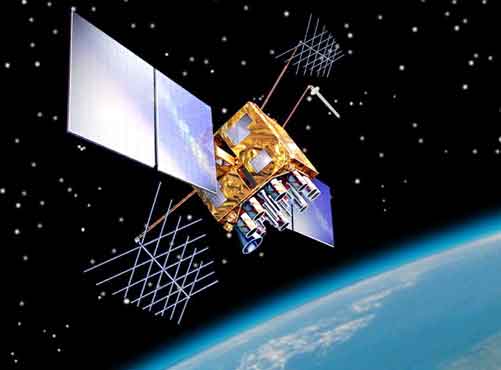How our space prowess aided surgical strikes

India has some of the sharpest eyes in the sky and to prepare for the 'surgical strikes' India's best bird in the sky, the Cartosat 2-series satellite launched as recently as June 22 played a key role, explains the writer. A Jagan Mohan Reddy
The Cartosat 2 series has a unique capability of capturing a 1-minute video, which despite its enormous speed of 37 km a second, is able to focus at a single point for a minute
“The most aggressive military action from India toward Pakistan in years and could mark a shift in India's strategy toward its neighbour.”
- Washington Post
India carried out surgical strikes in Pakistan Occupied Kashmir, inflicting heavy casualties on terrorists and ‘those protecting them’ .The said 'surgical strikes' were carried out in Bhimber, Hotspring, Kel & Lipa sectors, on Pak's side of LoC destroying 7 terror launch pads killing 38 terrorists and 2 Pakistani soldiers with no Indian casualties. The option of surgical strikes was taken in the wake of terrorists gathering in large numbers along the LoC with the objective of crossing the border and targeting locations in Jammu and Kashmir, as well as other metros.
Surgical strikes are military operations undertaken by forces across the world to move on the offensive, hit enemy targets and installations, and return to primary positions, all with lightning speed and with the added preca- ution of suffering limited casualty. But many of us are not aware that the precision ‘surgical strikes’ were ably assisted and facilitated by at least half a dozen satellites.
How space prowess helped
The Indian Space Research Organisation (ISRO) evidently does not fight wars and is purely a civilian agency, but the capabilities it imparts to the nation are among the very best in the world. From watching over the terrorist infrastructure in Pakistan to providing two-way communication in desolate places to giving out accurate navigation signals, ISRO has built a formidable infrastructure that helps India protect its borders in day or night.
Steadily and silently, the 17,000 strong workforce of the ISRO contributes to keeping 1.2 billion Indians secure. India has some of the sharpest eyes in the sky and to prepare for the 'surgical strikes' India's best bird in the sky, the Cartosat 2-series satellite launched as recently as June 22 played a key role. From its 526-km perch, Cartosat 2 can peer at every object in Pakistan and can easily count the number of cars parked in the grand mansion of Pakistani Prime Minister Nawaz Sharif.
With its almost 0.65-m resolution, as it rotates the earth every 90 minutes, this formidable spy in the sky can count every tank, truck and fighter aircraft parked anywhere in Pakistan or for that matter anywhere India desires. The Cartosat 2 series has a unique capability of capturing a 1-minute video, which despite its enormous speed of 37 km a second, is able to focus at a single point for a minute.
In addition, there were three other earth imaging satellites Cartosat-1, Cartosat-2 and Resourcesat-2 that provide top class imagery during day time. Going further, ISRO seeks to develop satellites that have a resolution of 25 cm in the very near future. In contrast, Pakistan has no such capability. Former ISRO chairman G Madhavan Nair says even China does not have such high-resolution satellites, the best China has is about 5-m resolution.
A stitch in time saves nine
Nair says “India invested heavily in space imaging technology and is now reaping the benefits.” India flies some satellites that have day and night viewing capabilities called ‘synthetic aperture radar satellites’. There are two in orbit, the RISAT-1 and RISAT-2.Nothing can hide from these mean birds as they can see through cloud cover and are not blinded at night. Especially RISAT-2, which is among the best in its class and its revisit time, is relatively short.
Assessing damage on the camps that harboured the terrorists would be relatively easy using the radar satellites. GSAT-6, 2,000 kg-plus bird, provides unprecedented capability to India's armed forces as it has the multi-media capability and can stream video in both directions. It has the largest antennae which is 6 m in diameter.
This is one unique satellite which will play a crucial role in the network-centric warfare of the 21st century. Using a hand-held device, individual soldiers can connect and will be able to transmit live pictures of what they can see from their helmet mounted cameras even as they engage in combat.
What more?
Though most of the resources are focused on land since India has hostile neighbours, both on its western and eastern fronts, ISRO has not forgotten the deep blue oceans that surround India. On a specific demand by the Indian Navy, the Indian space scientists have already deployed a satellite ‘Rukmini',which is a dedicated communications satellite that helps the Indian Navy talk to its ships when they are beyond the visual range, in a secure fashion.
ISRO is also likely to deliver a dedicated satellite for the Indian Air Force. In the years to come, India's space assets will play a much bigger role if and when hostilities break out on our borders. As Kiran Kumar, chairman of ISRO rightly says, “The Indian space agency will not be found lacking in helping secure India's national interests now and in future.”
( The author can be reached at: drjaganmohanreddy @gmail.com)
-
Related News
-
More from Metro India

